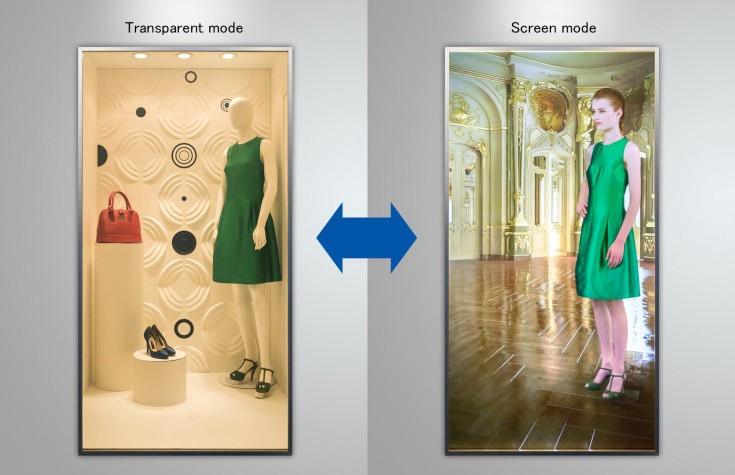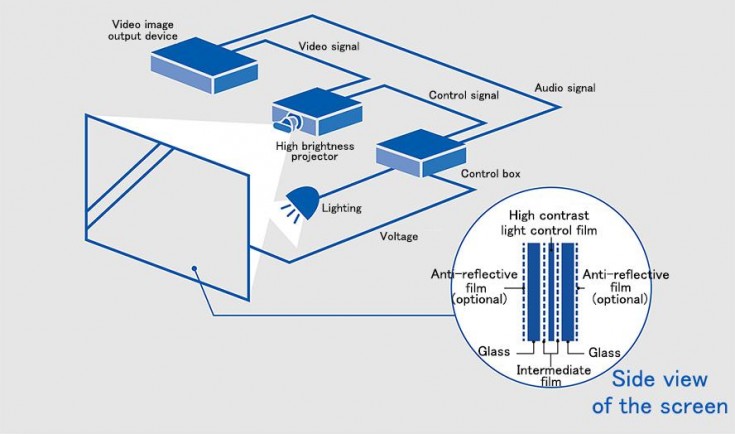The rollout is to keep up with growing demands for digital signage that can be used for captivating exhibition service in places like stores, shopping malls, museums, and tourist information center.
The new product is a system that enables using show window as both the high resolution digital signage and clear glass to provide a view of exhibited products.
It is composed with a glass named XC-CSG01G and a control box called as XC-CSC01G-A1.
The XC-CSG01G is a unique glass comprised of a high contrast light control film placed in between 2 sheets of glass, which when voltage is applied changes from the screen mode to the transparent mode. Images are projected from the rear onto the glass during the screen mode.
The control box synchronously operates the projector and the screen per the image content, and changes the screen from transparent mode to screen mode.
During the transparent mode, it will serve as a shop window showcasing products and exhibits.
Meanwhile, in the screen mode it projects high resolution images on the glass to introduce information about new products or about various campaigns during the sale season.
This makes the users to make more dynamic and effective use of the show window, which will help attracting peoples’ eyes.
Panasonic plans to sell the new visual solutions to the distribution market public institutions, and public facilities, such as commercial facilities, retail stores, hotels, airports, and museums.




[Key features]
1. Reproduces high contrast images onto a large transparent glass
1) Realizes high contrast images by absorbing external light
Traditionally, images have been projected onto cloudy white, electric switchable glass, but this type of glass was incapable of displaying high contrast images due to image degradation caused by external light.
Panasonic has combined glass with a high contrast light control film, which is comprised of a transparent-cloudy white switching layer containing special polymers and capsules and a color hue control layer. The color hue control layer will absorb a great deal of external light in screen mode, thereby significantly reducing image degradation and bringing to life high contrast images on par with digital signage, even in brightly lit environments.
2) Can optimize image quality according to the installation environment
By adjusting the color hue control layer's permeability depending on the level of lighting in the installation environment, the screen can maintain the same level of high contrast in environments of varying brightness. In brightly lit spaces, it can reproduce images with rich blacks, and in dark environments, it can reproduce high contrast images even with a compact projector.
2. Serves as a show window displaying products and exhibits clearly
In the transparent mode, voltage is applied to the transparent - cloudy white switching layer which will give regularity to the arrangement of the light crystal molecules inside, thereby enabling the light to directly pass through. Moreover, by applying the maximum voltage to the color hue control layer, the permeability of the high contrast light control film will be improved.
With the anti-reflective (AR) film (optional) on the surface of the glass that reduces unwanted glare, Panasonic has realized a permeability of approximately 68%. This enables the glass to serve as a shop window, giving a clear view of products and exhibits behind the glass.
3. Numerous screens may be combined and controlled as a single large screen system
Numerous screens may be combined horizontally, so for example, a 221-inch (16:9) screen measuring 4.9m wide and 2.75m tall can be created.
The control box will switch between transparent and screen modes, control the projector, and turn ON/OFF the lighting in the exhibition space behind the glass.

